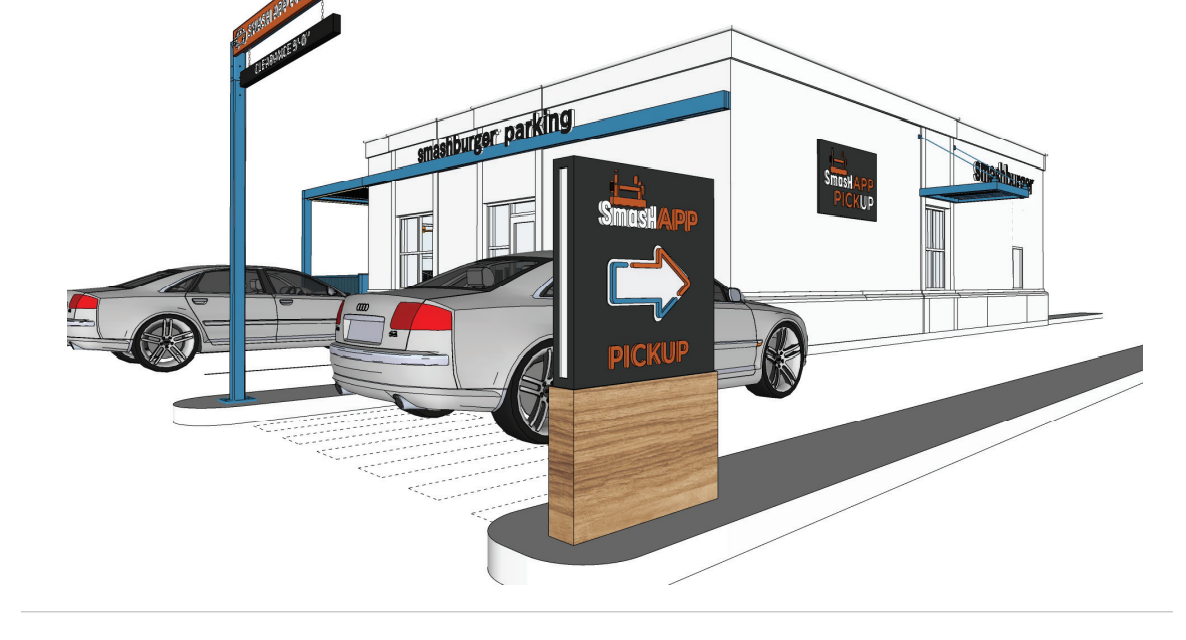Restaurant chains are giving their drive-thrus a facelift in search of convenience

Restaurant chains are giving their drive-thrus an update to make the take-out experience more convenient.
Smashburger has steadily been rolling out its virtual drive-thru experience this year that allows customers to preorder and prepay for their food before even arriving at the restaurant. Panera Bread is also testing the use of artificial intelligence technology to take orders in two Upstate New York locations.
Drive-thrus have always been a revenue driver for many restaurant chains, but during the pandemic, many customers leaned into this method of ordering to minimize physical contact. From February 2020 to February 2022, drive-thru orders rose by 20%, according to findings from The NPD Group. The continuous popularity of drive-thrus has influenced innovations in this ordering method in an attempt to make order pickup faster, the experience better and to avoid losing customers.
“Having the drive-thrus is really making the highest margin channel more accessible to the customers,” said Jessica Chen, research specialist at market research firm YipitData. “The Covid pandemic really helped boost consumer spending in this channel because of the dining room closures and a demand for contactless ordering experience.”
Evolving drive-thru needs
Drive-thrus, when successfully combined with the restaurants’ digital experience, has the potential to improve sales. For instance, in July 2021, Chipotle’s drive-thru experience — or Chipotlanes — drove about 15% more digital sales than locations that didn’t have Chipotlanes over the trailing 12 months. Chipotlanes, unlike typical drive-thrus, require customers to order online and pick up their food at the store window.
But more legacy drive-thru programs still face some snags — especially as more people flocked to them during the pandemic. The average time spent in drive-thrus increased by 25 seconds in 2021 compared to 2020, according to SeeLevel HX. In December, for example, parent company Restaurant Brands International said that Burger King is working towards a more simplified menu and axe items that are difficult to put together in order to boost drive-thru times.
Indeed, it was the Covid-driven demand for drive-thrus that pushed Smashburger to make upgrades, said Smashburger’s President Carl Bachmann. Customers can use the Smashburger app or on its website to order ahead and essentially pickup their orders via drive-thru. Bachmann said these updates would help eliminate the lines at the drive-thru lane.
“Based on the volume in the restaurants and based on the distance you are from our restaurant, we can gauge when to fire the food so it’s ready at a certain time,” he said. “Our vision is that a three or four car stack is enough, that people can get in and out.”
The company said it had previously tested a traditional drive-thru, complete with a squawk box, a payment window and a pickup window. However, Bachmann said it was challenging for the company because Smashburger cooks food to order and the average ticket time is seven minutes.
Smashburger will have five locations with a virtual drive-thru option by the end of the year and plans to grow that number in 2023. The company is also experimenting with voice and text ordering as a potential upgrade.
“I think this gives them an opportunity to get a high-quality product fast, hot and fresh,” Bachmann said. “We don’t have to sacrifice our food quality standards to get people through the drive-thru, and that’s why we lean in on technology to accomplish that goal.”
Much like Smashburger, Checkers & Rally’s is also rolling out drive-thru upgrades that would help workers maximize their time and give people a better ordering experience.Checkers & Rally’s said in January that plans to install an AI-based voice assistant technology at all corporate-owned locations this year. During a test with the technology in 2021, Checkers & Rally’s saw a 98% accuracy rate.
Jack in the box, meanwhile, is rethinking its entire store footprint to better account for drive-thrus. The company is rolling out drive-thru prototypes in 2023 featuring double lanes, express pickups and a smaller dining room. Jack in the Box said the company hopes to use this redesign to appeal to the grab-and-go type of customers.
Despite the opportunity ahead, drive-thru updates come with some challenges, YipitData’s Chen said some restaurant chains will have to spend a significant amount on a location to accommodate the new drive-thru experience. Additionally, landlords may not be amenable to converting an existing location.
For some of these upgrades, accuracy still seems to be an issue. A recent survey from financial service firm BTIG indicates that the accuracy rate of McDonald’s voice ordering drive-thrus at some restaurants in Illinois was in the low 80% range. That’s lower than the over 95% accuracy of orders prior, the survey indicates.
“The main challenge is really on the logistics side on building out the new structure,” Chen said. “Although there’s incremental cost, the increased margin can usually offset the incremental cost and bring additional profitability.”

